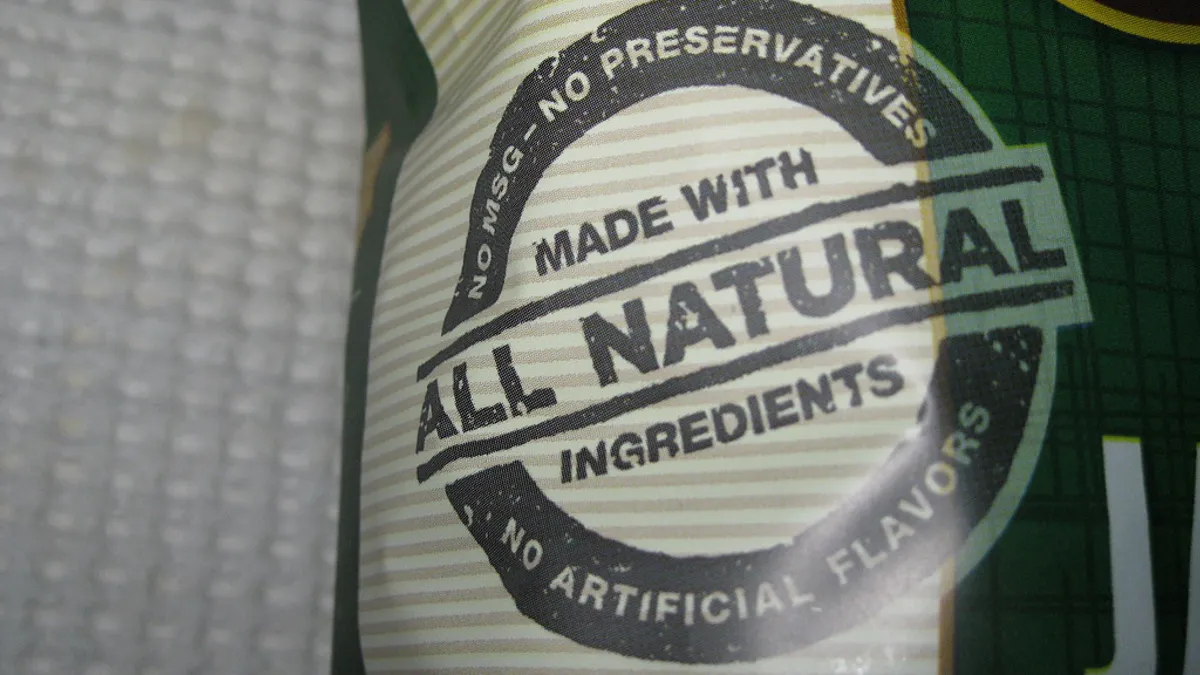Dive Brief:
- In a report previewed exclusively for Food Dive, the Food Marketing Institute said there's notable confusion among retailers over what the clean label trend is and how they can capitalize on it. According to the association, companies should offer shoppers additional transparency without actually using words like "clean" and "simple" in marketing materials, which can imply that other products are "dirty" or less healthy.
- At the same time, FMI recommended that retailers pursue clean labels as a competitive strategy, that they collaborate with their suppliers on formulations and marketing, and that they closely monitor consumer sentiment and be ready for change.
- Many retailers have chosen to focus on clean label marketing with their private label lines. Target, for one, recently removed artificial flavors and sweeteners from its kids' line, while Hy-Vee announced it would remove more than 200 synthetic chemicals and artificial ingredients in many of its store brand products.
Dive Insight:
According to FMI's 2017 Grocery Shopper Trends, 65% of shoppers seek to avoid ingredients like salt, sugar and antibiotics, while 59% look for minimal processing claims like "no artificial preservatives" and "non-GMO." Consumers also want to know what "natural" means and what cage-free actually entails.
The demand for transparency in the food chain is higher than ever, and it will only increase, according to experts at the FMI Midwinter Conference.
The so-called clean label trend is a catch-all for this desire for sustainability, simplicity and fewer inputs in food. But the trend is also somewhat baffling to retailers — what does "clean" mean, exactly? How can they most effectively capitalize on the demand that's driving this movement?
In its new report, FMI laid out some do's and don'ts for retailers. At the top of the list of don'ts is falling into what the report terms the "clean versus dirty trap." Some clean label claims, and especially that word "clean," can imply that other products are not as clean or high quality — or "dirty," according to FMI.
To avoid this, the organization recommends testing product marketing and label claims to make sure they're not sparking this association. Overall, the report suggests avoiding language that implies value, like "clean," and instead focus on product attributes. As one retailer said in an interview with the report's authors: "Give consumers the information and let them make their own decisions. It's not about good or bad, it's just a choice." FMI notes that marketing efforts should be focused around being "clear" rather than "clean."
According to retailer surveys conducted by the report's authors, around 50% of grocers say they're providing consumer education related to clean labeling. That percentage should continue to grow along with people's desire for increased transparency.
As retailers look for ways to stand out in a crowded marketplace, many have incorporated clean label trends into their store brand products. Hy-Vee initiated a sweeping reformulation of its private label lines last year, while Southeastern Grocers recently completed its reformulation of more than 2,000 store brand items. Natural and organic private labels have grown immensely in recent years, too. Kroger's Simple Truth is now a $2 billion brand while Albertsons' O Organics just hit $1 billion in 12-month sales.
According to FMI, the desire for clean products and clear marketing will continue to grow well into the future.
"We believe this is a long-term trend, just like natural and organic," said Doug Baker, vice president of industry relations, private brands and technology with FMI.








